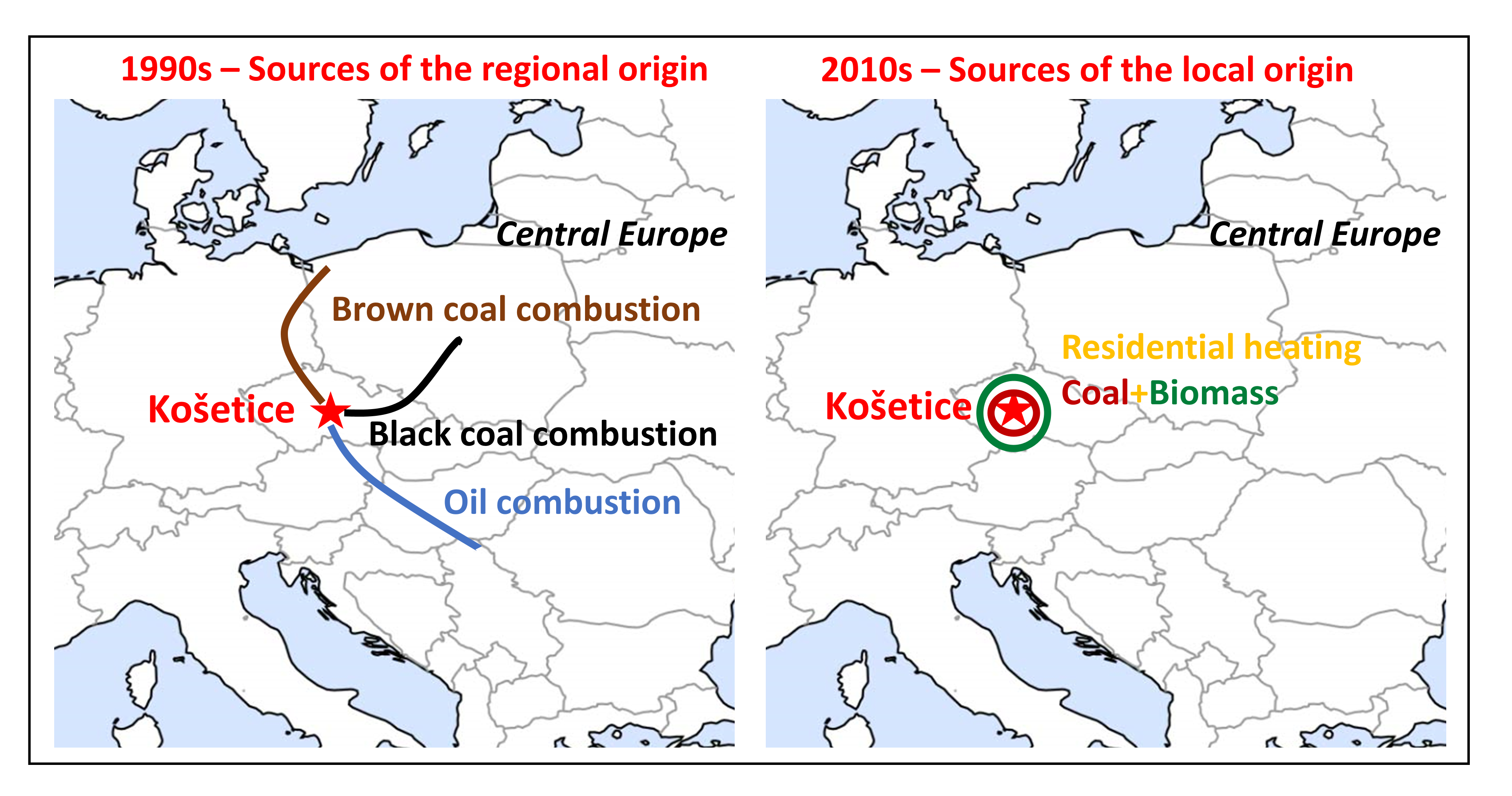Evaluation of conceptual tools in air quality protection based on identification of pollution sources
 As proper identification of atmospheric aerosol sources is essential for qualified decision-making in air quality management, work addressing this issue is one of the DACP’s directly applicable results. This especially holds for the study Comparing the PM2.5 chemical composition and sources at a rural background site in Central Europe between 1993/1994/1995 and 2009/2010: Effect of legislative measures and economic transformation on air quality. This work presents the PM2.5 chemical composition data from the first half of the 1990s compared to analogous data from the end of the first decade of the millennium. Comparing these two data sets forms a basis for assessing the effect of legislative measures and economic transformation on air quality in the Czech Republic. It turned out that industrial sources of regional origin, combustion of coal/oil/gasoline/diesel in the 1990s, had been replaced by coal/biomass burning for residential heating. The decreasing trend in PM2.5 elemental concentrations and in the share of sources of PM2.5 over 15 years has confirmed the positive impact of legislative regulations, especially on large and medium-sized stationary sources, but this trend is also a by-product of the economic transformation that has taken place in the Czech Republic.
As proper identification of atmospheric aerosol sources is essential for qualified decision-making in air quality management, work addressing this issue is one of the DACP’s directly applicable results. This especially holds for the study Comparing the PM2.5 chemical composition and sources at a rural background site in Central Europe between 1993/1994/1995 and 2009/2010: Effect of legislative measures and economic transformation on air quality. This work presents the PM2.5 chemical composition data from the first half of the 1990s compared to analogous data from the end of the first decade of the millennium. Comparing these two data sets forms a basis for assessing the effect of legislative measures and economic transformation on air quality in the Czech Republic. It turned out that industrial sources of regional origin, combustion of coal/oil/gasoline/diesel in the 1990s, had been replaced by coal/biomass burning for residential heating. The decreasing trend in PM2.5 elemental concentrations and in the share of sources of PM2.5 over 15 years has confirmed the positive impact of legislative regulations, especially on large and medium-sized stationary sources, but this trend is also a by-product of the economic transformation that has taken place in the Czech Republic.
- Pokorná P., Schwarz J., Krejci K., Swietlicki E., Havránek V., Ždímal V., Comparison of PM2.5 chemical composition and sources at a rural background site in Central Europe between the years 1993/1994/1995 and 2009/2010, Environ. Pollut. 241, 841-851, 2018. DOI